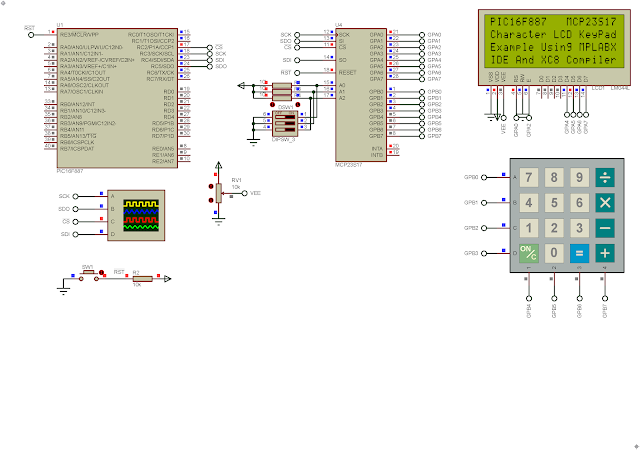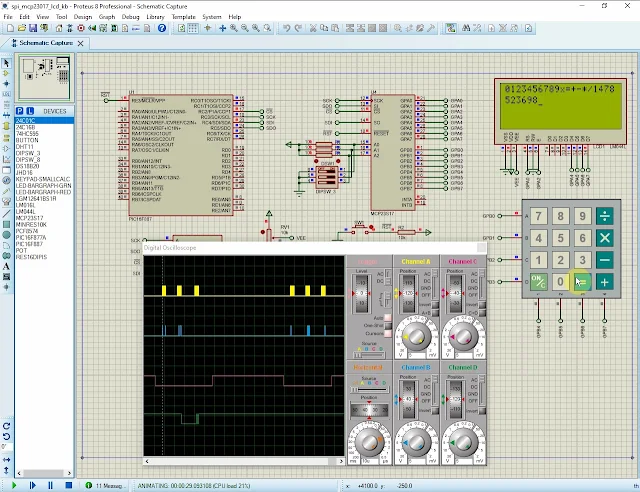In previous example, I use the MCP23S17 to drive an HD44780 based 20x4 character LCD using the 4-bit data transfer mode. This chip has two GPIO ports. So it can interface to various types of digital I/O devices including a dot matrix display, a multiplexing 7-Segment display, a matrix keypad, etc.
 |
| Simulating Program in Proteus |
In this example, I use a 20x4 character LCD and a 4x4 matrix keypad. They are controlled by the MCP23S17 GPIO extender chip. This chip uses the SPI interface that controlled by a PIC16F887 micro-controller.
%20Pin%20Out.jpg) |
| A 4x4 membrane matrix keypad is suitable for most of hobbyist electronics projects |
I add a key pad scanning routine in the C main file. It's very simple, and light weight. The founded key is an ASCII character that directly show on the LCD, otherwise it return 0 value.
I wrote a driver for the MCP23S17 that use the SPI driver within the project file.
The mcp23S17.h C header file:
The mcp23S17.c C source file:
 |
| Simulating Program |
Click here to download its source file.
No comments:
Post a Comment